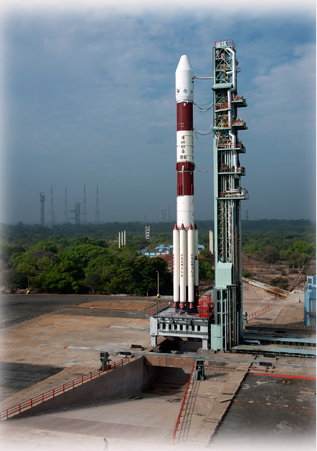PSLV
 The Polar Satellite Launch Vehicle (PSLV) has proved itself to be a versatile
vehicle for diverse missions and is now the workhorse of ISRO. It was the first launcher to gain
operational status.
The Polar Satellite Launch Vehicle (PSLV) has proved itself to be a versatile
vehicle for diverse missions and is now the workhorse of ISRO. It was the first launcher to gain
operational status.
PSLV is meeting the national requirements as well as the launch requirements for international customers. The long string of consecutive successes and multi-satellite launch capability has reinforced the status of PSLV as a reliable, versatile and affordable launcher in the global market. Over the years, continual technological improvements have enhanced the payload capability to 1750 kg into 600 km Sun Synchronous Polar Orbit (SSPO) and 1425 kg into Sub Geo-Synchronous Transfer Orbit of 284 km x 20650 km. The fact that PSLV was used to launch Chandrayaan-1 in India’s first lunar mission and Mangalyaan in India’s first Mars orbiter Mission, is a testimony to its reliability and versatility.
Configuration
PSLV, the 44 m tall vehicle with a lift off mass of 320 ton (XL) ton, is configured as a four stage vehicle with alternate solid and liquid propulsion stages. The first stage carries 139 ton of solid propellant, which is usually augmented by two, four or six ton solid propellant strap-on motors for heavier payloads. The second stage uses the indigenously developed Vikas Engine and carries 40 ton of liquid propellant. The third stage is a 7 ton solid motor encased in a composite motor case while the fourth stage is a liquid stage with a twin-engine configuration that carries 2 ton liquid propellant. The satellite is housed in a payload adaptor module and is protected during the atmospheric ascent phase by a heat shield of 3.2 m diameter.
Vehicle Variants and Launch Capability
 |
PSLV-CA
|
 |
PSLV-DL
|
 |
PSLV-QL
|
 |
PSLV-XL
|